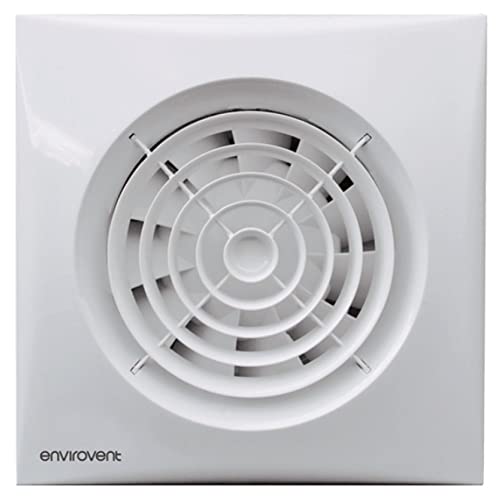Why you should never use a dehumidifier in a bathroom, according to experts
Tempted to put your dehumidifier in the bathroom? Experts explain why it's a potentially fatal mistake and how to use one safely

Fed up of steamy bathroom mirrors and wet slippy floors? If you're thinking of using your electrical dehumidifier for bathroom condensation then you could be making a fatal mistake, say the experts.
While the moisture removing prowess of the best dehumidifiers is always worthy of recognition, there's a time and place for using them, and the bathroom isn't it.
Although non plug-in moisture absorbers are of course considered safe, a powered dehumidifier that mechanically extracts moisture from the air is a no-no. Even if it's wall-mounted and wired.
Here's why the experts say no to a dehumidifier for bathrooms and the correct guidance for using one.
Why using a dehumidifier in a bathroom isn't safe or legal
Steamy showers or baths and hard cold surfaces such as bathroom tiles are the perfect combination for condensation and moisture to build up in your bathroom. With the correct bathroom ventilation and the best bathroom extractor fan, the theory is you shouldn't need any extra methods to remove the excess water that builds up.
But what if you don't? It could be tempting to pop in your dehumidifier to extract any leftover moisture to prevent issues such as damp walls or ceilings. However, when we asked the experts if there are any types of electrical dehumidifiers that are safe to use in bathrooms, their answer is perfectly clear.
"No, it is illegal and not safe to use electrical appliances in the bathroom in the UK," warns Chris Michael, founder and managing director of Meaco.
Bring your dream home to life with expert advice, how to guides and design inspiration. Sign up for our newsletter and get two free tickets to a Homebuilding & Renovating Show near you.
“Controlling humidity levels in your bathroom is crucial to prevent condensation, damp, and mould," agrees Andy Simms, building expert at MyBuilder.com, "and although it may feel like a dehumidifier is a good way to combat moisture damage; it’s powered by electricity and is therefore not safe."

Chris and his partner Michelle started Meaco in 1991. Meaco is now regarded internationally as a major player in the dehumidifier industry selling to 20+ countries throughout Europe, North America and South Africa. Meaco sets the benchmark for quality and development in its sector, leading by example and reducing the energy consumption of its appliances.

With almost a decade of experience on the front line in construction as a multi-trader, Andy has a vast amount of knowledge and expertise in both homebuilding and maintenance.
Alternatives to using a dehumidifier in a bathroom
So if you can't use a dehumidifier for bathroom moisture removal, what can you do instead? Here's what the experts recommend.
1. Natural ventilation
“A free alternative to a dehumidifier is to use natural ventilation. Keep your windows and doors open while you shower or bath – when possible – to allow moisture to escape," says Andy Simms. "This is very important to do especially after a shower/bath to help airflow and dry out the room quickly."
Alternatively, "open the window for ten minutes after bathing or showering," suggests Chris Michael. A more practical solution if your bathroom door opens onto a communal area such as a hallway, or you have an ensuite bathroom. Letting the moisture out of the bathroom into the bedroom where there are lots of fabrics and often carpets isn't entirely practical either – especially when you consider the fact your carpet could already be home to invisible mould.

2. Install an extractor fan
"If your bathroom doesn’t have a window, or you can’t keep the door open for long periods, the most practical and effective solution is hiring an expert to install an extractor fan in your bathroom to remove condensation and help prevent bathroom mould," says Andy Simms. "Or, if not an extractor fan, another great alternative is to install a ventilation grille," he suggests.
But, as well as installing an extractor fan, you also need to make sure you use it properly, says Chris Michael.
"The effectiveness of bathroom extractor fans depends on how well maintained the extractor fan is, whether it is the right size for the bathroom and also whether it is used," he says, noting how lots of people turn them off because of noise or energy consumption fears.
Not sure of the guidance around maintenance? Follow our guide on how to clean a bathroom extractor fan to make sure yours is working to the best of its ability.
Shop these bathroom extractor fans
3. Lower the temperature of your showers
“Having a cooler shower is another alternative to using a dehumidifier for bathroom condesation," suggests Andy Simms, "with the added bonus of saving you money on your heating bills, which is very important in today's cost of living crisis.
"By lowering the temperature, the bathroom won’t get as hot and the air will hold less moisture reducing condensation.”
4. Invest in a mirror with a demister pad
If condensation on your mirror is the main problem, consider switching to one of the best bathroom mirrors with lighting. Many come with inbuilt demister pads which will help keep your mirror steam free allowing you to get ready without you having to constantly wipe the mirror clean.
How to use your dehumidifier to combat bathroom condensation
The good news is, if you have a dehumidifier in your home to help with damp or mould issues, you can use it to help with bathroom condensation, as long as you use it correctly.
"To dry a bathroom with a dehumidifier all you have to do is plug it in outside the bathroom and leave the bathroom door open after a bath or shower with the dehumidifier by the entrance to the bathroom, but still outside it," says Chris Michael. "The damp air will naturally migrate towards the dehumidifier."
And as tempting as it can be to pop it inside the room, even if there's no-one in there and no water being run, it's still not advisable warns Chris.
"Don’t encourage any use of a dehumidifier in the bathroom," he clearly states. "People can get seriously injured or killed by mixing bathrooms and 240 volts."
FAQs
Can you use a wall mounted dehumidifier in the bathroom?
Although wall mounted dehumidifiers may seem like a potential solution to choosing the right dehumidifier for bathroom condensation, this still isn't a safe or viable solution advises Chris Michael.
"This is not practical as plugs and sockets need to be three metres from a bath, shower or wash basin," he explains, "furthermore, domestic dehumidifiers do not have the correct IP rating for use in a wet area."
Struggling to find ways of tackling mositure build up or stale air in other rooms too? Find out more advice on how to ventilate rooms without windows and if you're in the early stages of designing a new-build, find out whether you should be considering MVHR as part of your design.

Sarah is Homebuilding & Renovating’s Assistant Editor and joined the team in 2024. An established homes and interiors writer, Sarah has renovated and extended a number of properties, including a listing building and renovation project that featured on Grand Designs. Although she said she would never buy a listed property again, she has recently purchased a Grade II listed apartment. As it had already been professionally renovated, she has instead set her sights on tackling some changes to improve the building’s energy efficiency, as well as adding some personal touches to the interior.




